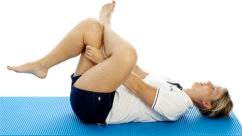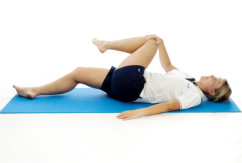
My name is Natalie March from Physio-logical, a Chartered Physiotherapist based within Active4Less in PO9. I hope you found our last self-help exercises for sciatica useful.
Some people may have heard of piriformis syndrome. We are going to give you some more information about what the piriformis muscle is, the symptoms and best treatments for piriformis syndrome.
Here is a testimonial from one of our clients who was suffering from piriformis syndrome:
"Kate is amazing! I have been coming to see her once a week at least for on going Piriformis Syndrome treatment (combined with seeing Natalie for physiotherapy). I will be ever grateful to both of them for not only determining what I was suffering from but for devising the courses of physio and massage which have proved so very effective for me.
I still have some discomfort from this condition but nothing compared to how it was when I first came to see them. I am so much more optimistic that I will one day be totally pain free now all due to the determination and care shown to me by both Kate and Natalie, all the while treating me with complete respect and professionalism. Thank you so much for all your help!"
Mr E, April 2016
What is Piriformis Syndrome?
Piriformis syndrome is a condition in which the piriformis muscle, located in the buttock region, tightens which then leads to buttock pain. Some people also describe pain, numbness and tingling down the back of their leg and sometimes into their foot. This is because the piriformis muscle can also irritate the nearby sciatic nerve.
Symptoms of Piriformis Syndrome
The most common symptoms are:
- Buttock pain
- Sciatic pain down the back of the thigh, calf and foot
- Increased pain after prolonged sitting
- Pain when walking up stairs or inclines
- Reduced range of movement of the hip
Treatment
Exercises combined with massage and soft tissue release is the best treatment for piriformis syndrome. Acupuncture is also an effective treatment to relax the piriformis muscle too. We offer acupuncture services at both our Havant and Basingstoke clinics.
Please be aware of your body and take advice from your GP before exercising or send an email to (enquiries@physio-logical.net) for advice and guidance. All the exercises and stretches should be pain free, please do not push into pain as you may irritate the sciatic nerve and make the pain worse.
Exercises for Piriformis Syndrome
Piriformis Stretches
There are two stretches for Piriformis:

- In this photo we are stretching the left piriformis, so if you have left buttock pain this is the stretch to do, if you have right sided symptoms then do this stretch the other way.
- Lie on your back with both knees bent and feet flat on the floor.
- Rest the ankle of your left leg over your right knee.
- Reach through the gap and pull your right thigh towards your chest and hold the stretch for thirty seconds. Repeat two times, three times a day.

- Again we are stretching the left piriformis, so if you have left buttock pain this is the stretch to do, if you have right sided symptoms then do this stretch on the other leg.
- Lie on your back with both knees bent, feet flat on the floor and hip distance apart.
- Pull your left knee up towards your chest, hold your knee with your right hand and pull it towards the right shoulder
- Hold the stretch for thirty seconds. Repeat two times, three times a day.
Lumbar Spine Rotation

- Lie on your back with your knees bent and feet together
- Roll your knees to one side and hold for thirty seconds then roll them to the other side and hold for thirty seconds.
- Repeat two times, three times a day.
If you are suffering from buttock/sciatic pain or any other aches or pains then please get in contact with us via enquiries@physio-logical.net or 07835 712306.
Exercise Sheets
Don’t forget to check out our self-help exercise sheets on our website. Please take a look at http://www.physio-logical.net/exercise-sheets/
Social Media
We are always updating our social media sites with news and offers please like us on Facebook - https://www.facebook.com/physio.logical.net, follow us on twitter - https://twitter.com/Physio_logical, follow us on instagram - https://www.instagram.com/physio_logical/ and connect with us on linked in: https://www.linkedin.com/company/physio-logical
For more tips and guidance, please visit www.physio-logical.net.